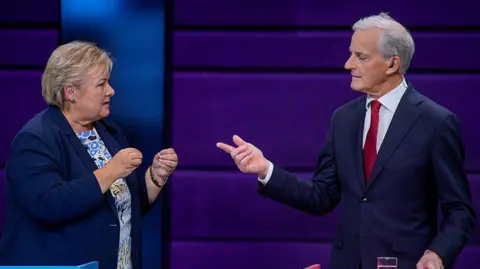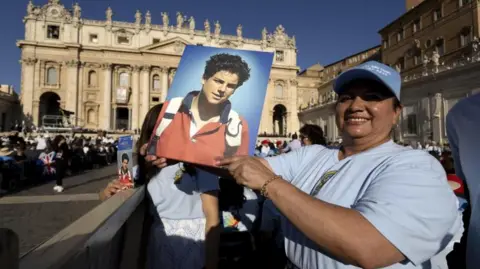---
Black smoke emerged from the chimney of the Sistine Chapel on Thursday morning, signaling that the cardinals meeting to choose the next pope have not yet reached a decision. As the conclave enters its second day, the anticipation grows among the gathered crowds in St. Peter’s Square.
The first round of voting, held on Wednesday evening, reportedly lasted over three hours, yet yielded no results, leading to audible gasps and disappointment among spectators as the black smoke signaled the need for further deliberations. Following a break for lunch, the 133 cardinals are expected to reconvene for additional rounds of voting, which will be conducted in total secrecy.
This conclave follows the death of Pope Francis last month and is noteworthy as the first of its kind in over a decade. With an unprecedented number of cardinals, many of whom were appointed by Francis, this conclave is highlighted as particularly diverse, leading to complex dynamics as the electors navigate their differing priorities and relationships.
The absence of a consensus is notable, especially in light of the past two conclaves, which concluded within just two days. Some cardinals express concerns that this conclave may be prolonged, as many electors are unfamiliar with one another, which could hinder the voting process.
Significantly, the conclave not only seeks to elect a new pope but also reflects the ideological divide within the Church exacerbated by Francis’ legacy. Progressives within the College of Cardinals advocate for continued change and inclusion, while their conservative counterparts appear ready to rally for a return to traditional values, using “unity” as a rallying cry — a term that has raised eyebrows among Francis' supporters.
As the cardinals prepare for subsequent votes, the dynamics signal deeper ideological rifts within the Church. This process remains under stringent security protocols, with cardinals swearing an oath of secrecy, and the entire conclave taking place out of public view, maintaining an air of mystery as the world watches and waits for the smoke to turn white, indicating the election of a new pope.
The next rounds of voting are scheduled for today, with expectations for further ballots should a consensus still elude them. With the complexities of this conclave, how long it will last remains uncertain, reminding everyone of the delicate balance within the Church as it seeks a new leader.
Black smoke emerged from the chimney of the Sistine Chapel on Thursday morning, signaling that the cardinals meeting to choose the next pope have not yet reached a decision. As the conclave enters its second day, the anticipation grows among the gathered crowds in St. Peter’s Square.
The first round of voting, held on Wednesday evening, reportedly lasted over three hours, yet yielded no results, leading to audible gasps and disappointment among spectators as the black smoke signaled the need for further deliberations. Following a break for lunch, the 133 cardinals are expected to reconvene for additional rounds of voting, which will be conducted in total secrecy.
This conclave follows the death of Pope Francis last month and is noteworthy as the first of its kind in over a decade. With an unprecedented number of cardinals, many of whom were appointed by Francis, this conclave is highlighted as particularly diverse, leading to complex dynamics as the electors navigate their differing priorities and relationships.
The absence of a consensus is notable, especially in light of the past two conclaves, which concluded within just two days. Some cardinals express concerns that this conclave may be prolonged, as many electors are unfamiliar with one another, which could hinder the voting process.
Significantly, the conclave not only seeks to elect a new pope but also reflects the ideological divide within the Church exacerbated by Francis’ legacy. Progressives within the College of Cardinals advocate for continued change and inclusion, while their conservative counterparts appear ready to rally for a return to traditional values, using “unity” as a rallying cry — a term that has raised eyebrows among Francis' supporters.
As the cardinals prepare for subsequent votes, the dynamics signal deeper ideological rifts within the Church. This process remains under stringent security protocols, with cardinals swearing an oath of secrecy, and the entire conclave taking place out of public view, maintaining an air of mystery as the world watches and waits for the smoke to turn white, indicating the election of a new pope.
The next rounds of voting are scheduled for today, with expectations for further ballots should a consensus still elude them. With the complexities of this conclave, how long it will last remains uncertain, reminding everyone of the delicate balance within the Church as it seeks a new leader.





















